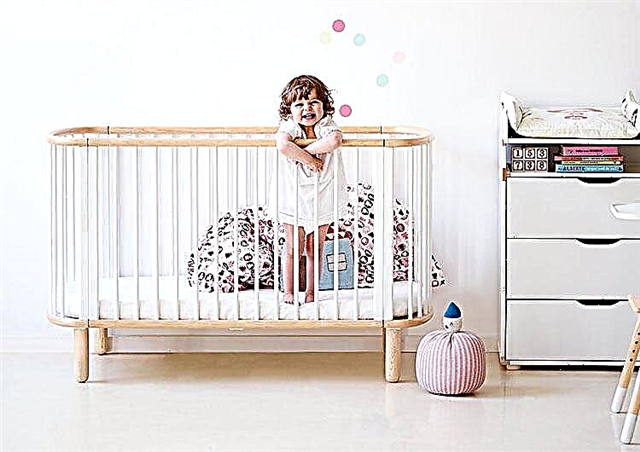
In the age of industrial production, those products that were not produced at the factory, but are made by hand, are especially appreciated. This is especially true for decorative interior items and home decoration. Stained glass windows were very famous even in the old days, and today the image on the glass can decorate any home.
You can paint the window yourself if you use special stained glass paints.
What it is?
Stained glass paints are a generalized name for several types of paints and varnishes, which can have a different composition and base, but there is one thing in common - the ability to adhere well to a glass surface. And this is a surface that has minimal adhesion, since the structure of the material does not at all imply the absorption of liquid. Therefore, the artists had a need to highlight a separate sector of paints and varnishes suitable for painting windows.


Drawing on glass using stained glass paints is carried out with standard artistic tools, which include brushes and palette knives, as well as varnish for the subsequent protection of the painted surface from the negative effects of external factors.
All stained-glass paints are characterized by well-visible brightness of shades, while they are usually quite liquid in themselves and do not require dilution with any kind of solvents.
However, their liquid promotes strong spreading, therefore it is recommended to use special circuits during the work.


Experts highlight a number of advantages of using stained glass paints.
- Stained glass in a modern interior looks rather unusual, and therefore can easily become an accent in design or even a highlight of the entire interior. Although traditionally the place of stained glass application was windows, any glass can be used as a work surface, be it an old mirror or an interior door.


- In recent years, it has become increasingly fashionable stained glass painting of small glass objects, which are later used as gifts. You can paint in this way a chandelier, dishes or even a photo frame. There are no such accessories in industrial production yet, and they will look more appropriate in an individual design - taking into account the specifics of the potential owner.
- Stained glass paints usually guarantee a high degree of adhesion to the base, so that you can not worry about the durability of the painting, regardless of the purpose of the painted object. The paint not only does not peel off by itself, but also tolerates insignificant mechanical stress and moisture well. Not in vain with stained glass paints they decorate dishes - as a rule, the dye normally tolerates the effects of chemical detergents.


In a word, stained glass paints have every chance not only not to disappear in the coming years, but also to become more and more widespread.


Types and composition
The classification of stained glass paints most often directly depends on what they are made of. According to the base material, they are divided into three main types.
Water based
The easiest option is water-based paints. They almost always include acrylic, but you should not confuse them with acrylic paints and varnishes proper, in which there is much more of this polymer. It is this variety that is better than any other suitable for children's creativity, because it does not contain any harmful additives and does not even smell. If the drawing is not very successful, it does not matter: until the composition has dried, it can be easily washed off with ordinary water.
After the completion of the work, the masterpiece requires special firing (its parameters are indicated on the packaging with the paint), otherwise the paint layer will be short-lived. The result is a transparent stained glass window that is perfect for windows.


Acrylic
Acrylic stained glass paints are very similar in their properties to the previous paragraph, but they are distinguished by their increased density. On the one hand, this somewhat simplifies painting on glass, on the other, sometimes you have to use a caustic solvent, which cannot but negatively affect the environmental friendliness of such a hobby. On the other hand, it would be fair to call this particular look professional, since different shades mix perfectly with each other, allowing you to get new colors.
Furthermore, these paints are weather-resistant, they are not afraid of heat, cold, or precipitation, and even do not require any firing. It is acrylic-based paints and varnishes that are considered optimal for adult beginners in this business.


Lacquer
Organic based varnish paints (with the use of resins) are distinguished by the highest quality of the resulting image. It is believed that they retain their original colors for a very long time, without fading in the sun and without being washed off with water. The resulting pattern has bright colors and does not require subsequent heat treatment, but you will have to wait a few days before it is completely dry.
Another thing is that, due to the resinous component, paints of this type usually have a very pungent odor, therefore they are not very suitable for home use.


Other varieties
Additives that some manufacturers add to a particular variety help to diversify the assortment of stained glass paints. For instance, fluorescent paints that glow in the dark are very popular - it is quite obvious that their use will allow the painted surface to remain a bright accent not only during daylight hours, but also in complete darkness.
Compositions with sparkles, which are still invisible in complete darkness, but literally begin to sparkle in the rays of light, are a kind of analogue.
Which one is better to choose?
Children, in principle, love to draw, and the ability to use glass that can transmit light through itself as the basis for a future drawing can simply charm kids.
By far the best stained glass paints for kids to paint on glass are the water-based varieties. It cannot be said with certainty that the ingestion of such a dye into the child's body will be completely harmless for him, but at least such a composition can be used without special protective equipment, and the baby will definitely not be poisoned by fumes. All other options are undesirable for the child, and lacquer paints based on organic resins are completely prohibited for use by children.

At the same time, manufacturers could not help responding to the growing consumer demand for paints designed specifically for children's creativity, therefore they began to produce special children's painting kits. As a rule, such a set includes not only a coloring matter, but also a plastic base for it, since not in every home parents will allow their child to study fine art with the help of windows or mirrors.
Ready-made sets can be produced both with a photo frame, which you can decorate at your own discretion, and with stained-glass windows, where the contours are already applied - you just have to paint them. The result of such exercises may well become a pleasant memory for the whole family. The choice of the number of colors should be based on the creative possibilities of the child.
It should be noted that water-based stained glass paints are not very suitable for mixing colors, so it will be difficult to get new shades from the existing small set. Nevertheless, for a child who is just starting to learn to paint on glass, 10 colors will be enough for a start, as long as they are bright enough and represent the entire spectrum of the palette.
Such a solution will be enough for painting semi-finished stained-glass windows, but children who are seriously interested in drawing and really know how to do it should be presented with a large set, which may even include 31 colors.
If you have high skill, you should not limit the child to ready-made contours - let him learn to create images on his own.
Terms of use
It is quite simple to use children's glass painting kits, but you should immediately understand the main rule according to which water-based paints are not recommended for decorating cutlery from the side of food application. Despite the fact that such a paint layer can be specially baked to increase durability, it still cannot compare in its characteristics with more complex synthetic types of paints.
With prolonged exposure to water, the pattern begins to dissolve, it can also be scratched with any sharp object, and the composition of the dye does not imply its use as food. Therefore, if it is possible to paint the dishes, then only along the outer edge. To avoid the temptation to do wrong it is better to give the child for artistic experiments only the pieces of plastic supplied with the colorful sets.


As for decorating plastic from kits for children's creativity, here the scheme is extremely simple. The template is a curly outline repeating all the lines of color differentiation in the future drawing. Such a template must be tightly attached to the transparent plastic, which acts as the basis for the created masterpiece, and paint over the contours of the drawing directly from the tube using a stencil.
After the paint dries, there will already be a drawing on the surface of the plastic, consisting of only contours - it will be enough to decorate it in any convenient way.
Naturally, plastic is not glass, so it would be a very bad idea to try to bake it.
Another thing is that the finished drawing can be "removed" from the plastic base without violating its integrity! In this form, it adheres perfectly to another surface, so that you can not spoil the glass or mirror immediately, but first draw a stained glass window on a plastic blank and evaluate the quality of the masterpiece.
It is very important that you can re-glue such a pattern from place to place several times, and no dirty traces remain in the old place. The latter quality greatly contributes to the fact that parents are not against the active use of children's creativity and experiments in the formation of the interior of the home.
Manufacturers and reviews
It will be much easier to choose from a huge assortment of various children's kits for painting with stained-glass paints if you focus not only on certain qualities, but also on the general reputation of the companies that produce such products.
Perhaps it's worth starting with the company's products "Ray"... This brand is widely known both in Russia and in many neighboring countries, as it produces an unlimited range of various goods for children's creativity. Of course, there was a place in the lineup for stained glass paints. In general, the products of this brand are chosen for their relatively low cost, as well as for the fact that this name is familiar to everyone and everyone. However, in such conditions, one should not expect the professional quality of the results obtained.


Although the stunning prevalence of Luch brand products in itself testifies to consumer confidence, the reputation of this brand's stained glass paints cannot be called impeccable. At least it is criticized quite strongly. In particular, consumers are perplexed by the rather long drying time of paints, which cannot be liked by young children, who are traditionally impatient.
Small sets of paints also surprise with the selection of shades - there, in particular, there may be two shades of pink palette (out of six) in the complete absence of, for example, blue. Someone may be shocked by the discrepancies regarding the drying time of the paint allowed by the manufacturer in the instructions, as well as the fact that for some reason the expiration date is indicated inside the package, as a result of which you can buy an expired product.


However, it cannot be said that such a solution will turn out to be a completely unsuccessful purchase. Commentators note that the composition does not cause the slightest criticism - the paints are really well suited for children's creativity, being completely safe. In addition, the manufacturer does not deceive when he promises a well-visible fluorescent effect - even in complete darkness, the pattern is noticeable.
The products of the Luch company, in spite of their shortcomings, are the most widespread in our country, but it is worth paying attention to competitors as well. The trade mark stands out among Russian brands Decola, produced by the famous factory of artistic paints "Nevskaya Palitra", and from foreign products one cannot fail to note the paints of a Korean company Amos. Both options are distinguished by significantly higher artistic qualities, but they also cost significantly more.


For information on how to make stained glass paints with your own hands, see the next video.



